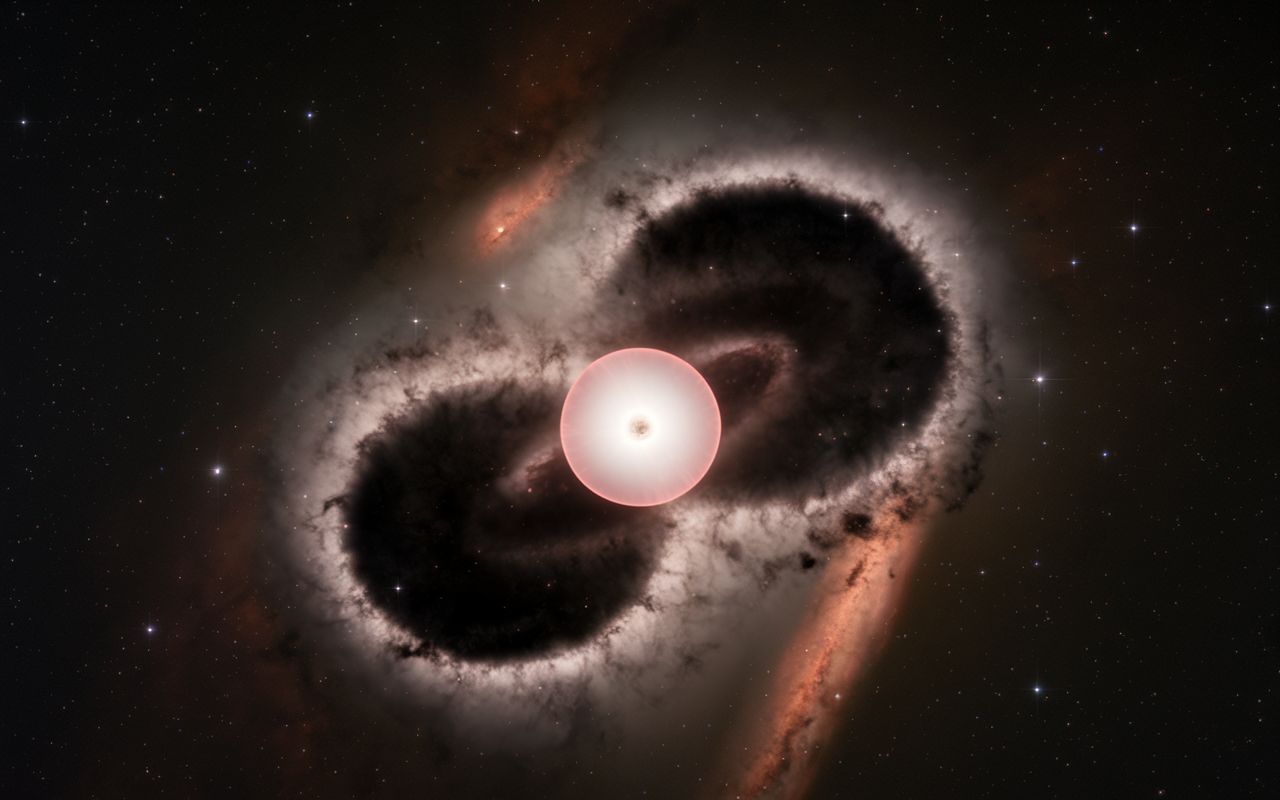Scientists on the verge of detecting dark matter? 👀
Published by Cédric,
Article author: Cédric DEPOND
Source: Physical Review X
Other Languages: FR, DE, ES, PT
Article author: Cédric DEPOND
Source: Physical Review X
Other Languages: FR, DE, ES, PT
Follow us on Google News (click on ☆)
An international team proposes a bold hypothesis: axions, hypothetical particles, could accumulate around neutron stars, creating potentially detectable clouds. These particles could constitute dark matter, responsible for the invisible gravity that structures the Universe.

Dark matter remains invisible to our instruments, but its presence is inferred through its gravitational effects on galaxies. This matter would account for about 27% of the Universe, although its exact nature remains a mystery. Axions, introduced in physics in the 1970s, are now seen as a serious lead. These lightweight particles interact only weakly with ordinary matter, making their detection extremely difficult.
Neutron stars, remnants of massive stars, are among the densest objects in the Universe. Their intense gravitational field could capture axions, forming dense clouds around them.
These axion clouds, interacting with the powerful magnetic fields of neutron stars, could emit specific electromagnetic signals. These signals would allow researchers to detect the presence of axions. Detecting such axion clouds would open a new era in dark matter research. The observation of these signals could be achieved with sensitive telescopes capable of capturing specific radio emissions.
Ultimately, this research could lead to confirming the existence of axions and offer answers on the properties of dark matter. Scientists hope to unveil new secrets of the Universe in this way.
What is dark matter and why is it so important?
Dark matter accounts for about 27% of the Universe, but it remains invisible. It influences the formation and rotation of galaxies. Astrophysicists are striving to understand its nature, as this could revolutionize our understanding of physics and the Universe.
Dark matter research involves several candidates, including axions. These lightweight particles could explain certain anomalies in galactic movements. Detecting them could validate fundamental theories of physics and open up perspectives on cosmological phenomena that are still poorly understood.
Dark matter acts as an invisible "skeleton" that guides the formation of galaxies. Its gravity holds galaxies together, influencing their movement and distribution in the Universe. Without it, galaxies would disintegrate under the effect of their own rotation.
Dark matter is essential for explaining the distribution of galaxies in the Universe. Using computer simulations, astrophysicists have demonstrated that it plays a key role in the evolution of large cosmic structures, such as filaments and galaxy clusters.
What is an axion and what is its role in dark matter?
Axions are hypothetical lightweight particles, postulated to resolve symmetry problems in physics. Their existence could explain the nature of dark matter, as they would interact very weakly with visible matter.
These particles could form in extreme environments, such as those surrounding neutron stars. By concentrating around these stars, axions could produce detectable signals, offering a potential avenue for exploring dark matter and its characteristics.